New PAM exhibitions offer unique experiences
Jiang Zhi’s solo exhibition “The Man Who Carves the Boat” on the sixth floor of the Pingshan Art Museum (PAM) provides a rare viewing experience: Visitors have to peep into small holes to see the artist’s photographic works and videos.
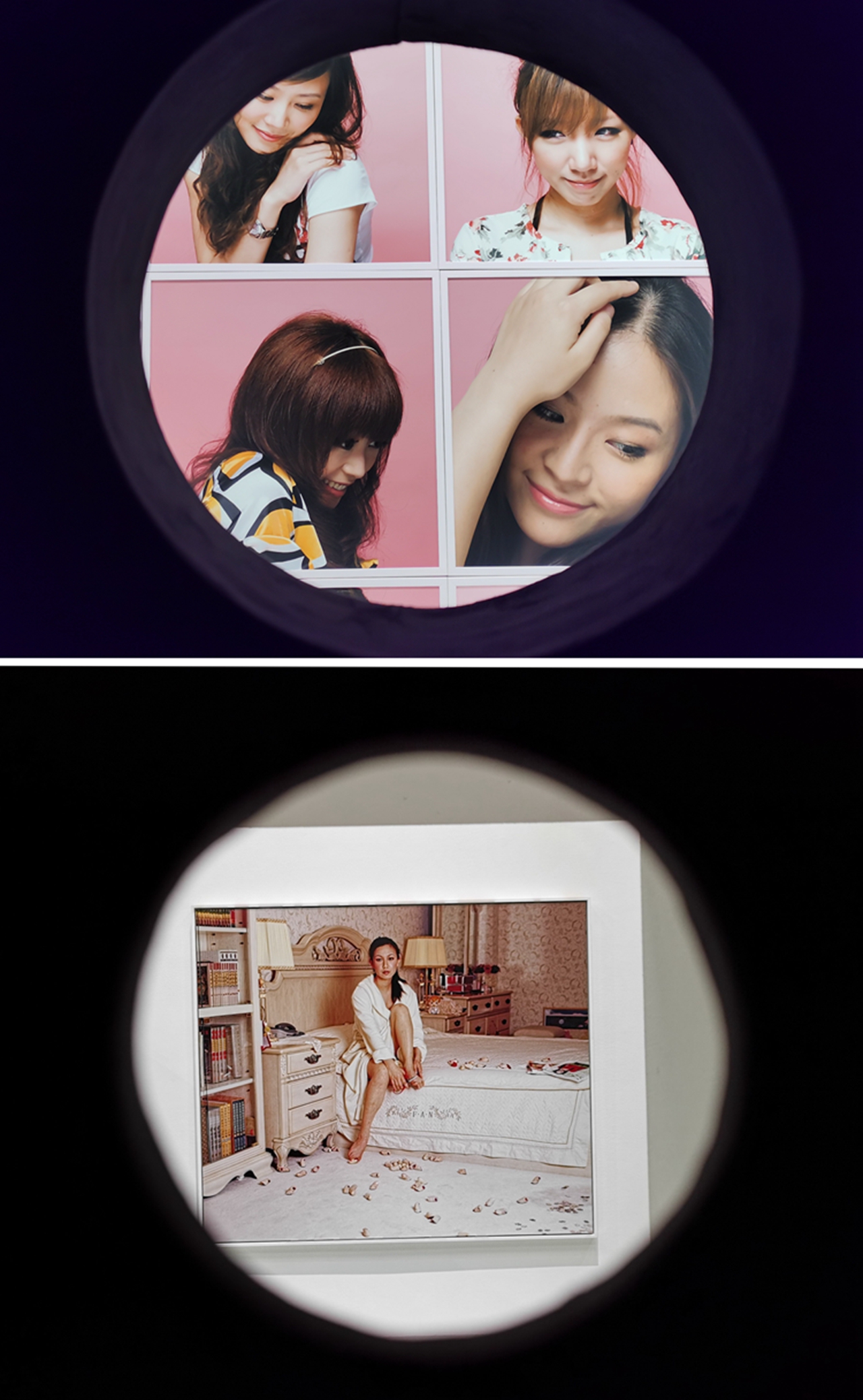
Works by Jiang Zhi are seen through small holes in a dark room at the artist's “The Man Who Carves the Boat” exhibition at Pingshan Art Museum. Photos by Cao Zhen
In a dark room, visitors can observe Jiang’s past works such as “Maiden, All Too Maiden!” (2009), a set of photos of young female models each presenting an expression of coyness, and “Elegy,” a series of photos visualizing the powerful sensory experience of light.
In the video “Curtain Call” (2009), an actress dressed in cheongsam responds to the repeated curtain calls, unwilling to leave the stage and giving an ultimate flirtation in the name of farewell. In Jiang’s iconic “Love Letters” (2010-2014) photo series, the artist sets different kinds of flowers ablaze and captures the moment when petals and flame coexist in an elegant equanimity.
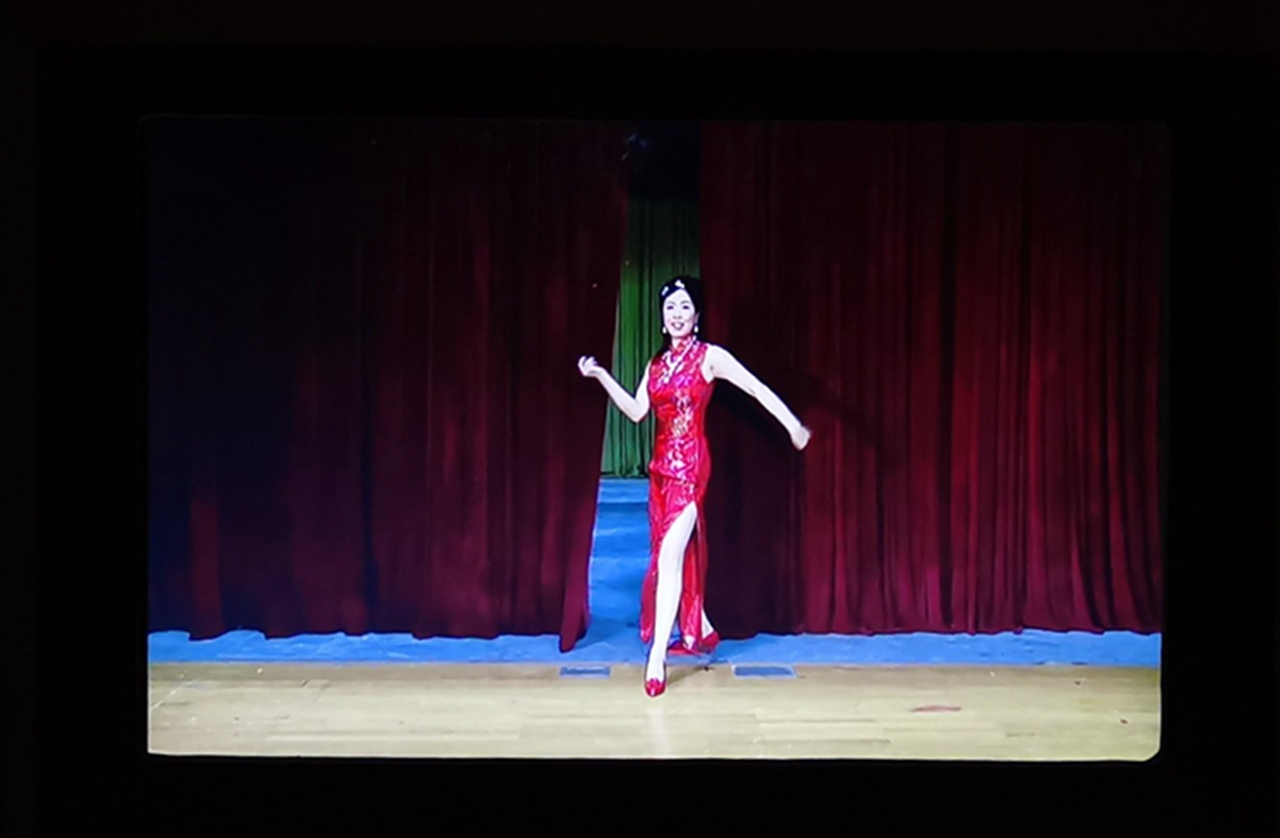
A scene from Jiang Zhi's video “Curtain Call,” which is seen through a hole in a dark room.
The exhibition curator Wang You regards this special exhibition-viewing experience as being in a universe of embodiments of faces, languages, fairytales and desires. In the dark room, dim lights casting from the small holes make them look like scattered stars.
“The exhibition establishes relations between the events in the past and the present,” Wang wrote in the curatorial statement. “Each star is independent but they form constellations. … They attract and influence each other, and collide and struggle with each other.”
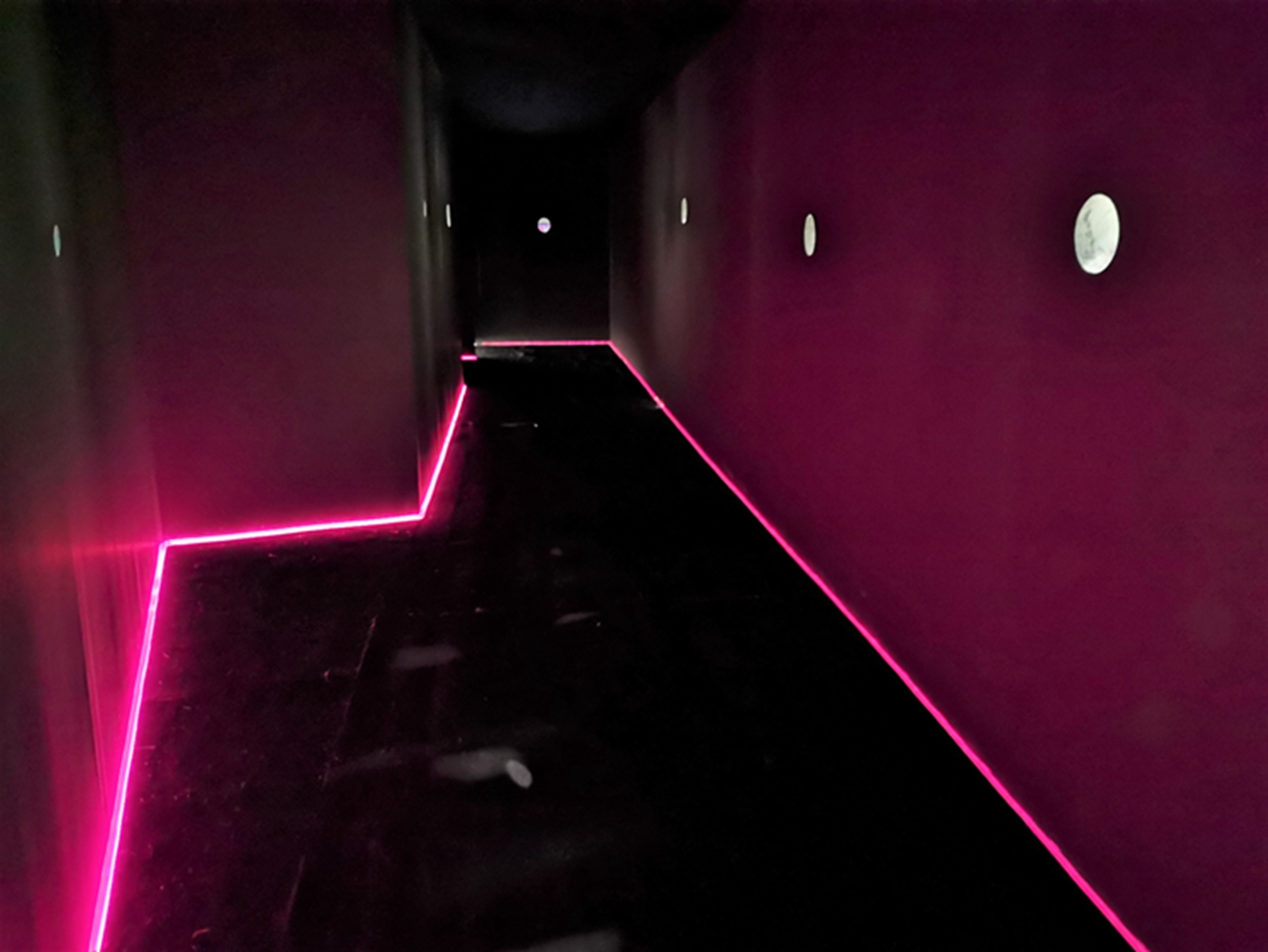
Visitors have to peep into small holes to see Jiang Zhi’s photographic works and videos at his exhibition.
One work of the exhibition, Jiang’s famous short video — “0.7% Salt” (2009), is screened in a theater on the fifth floor of the art museum. In this single-shot silent video, Hong Kong singer and actress Gillian Chung performs the delicate emotional transition from gently smiling to breaking down in tears, while maintaining eye contact with viewers throughout.
The video was made one year after Chung was involved in a scandal and the video encourages viewers to forgo prejudgement and divest tears of their symbolism, seeing them instead as mere objects and pure visual aesthetics of an emotion.
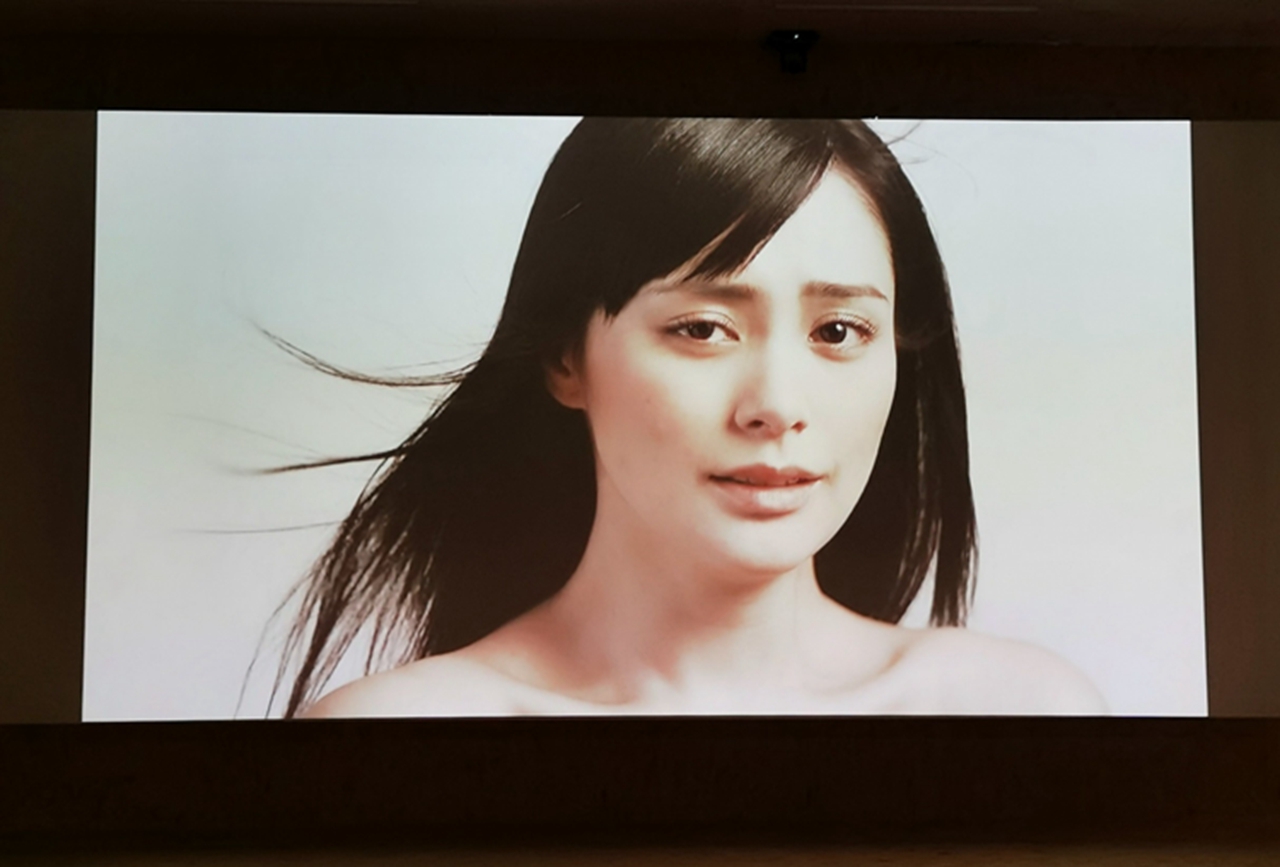
Hong Kong singer and actress Gillian Chung is seen in a scene from “0.7% Salt” created by Jiang Zhi. The video is played in a theater at the Pingshan Art Museum.
Jiang’s exhibition is the fifth exhibition of the Pingshan Art Museum’s Shenzhen Contemporary Artists Series. Considered one of China’s diverse and avant-garde artists of his age, Jiang’s artistic practice ranges widely from painting, video, installation and photography. He weaves mundane social and personal experiences into his works.
The art museum also recently opened the “Hometown Spring” exhibition on the third and fourth floors. The exhibition focuses on the changes in small Chinese cities and towns as migration and urbanization have transformed Chinese society in the past four decades, during which migrant people from small cities, towns and villages have integrated into urban life.
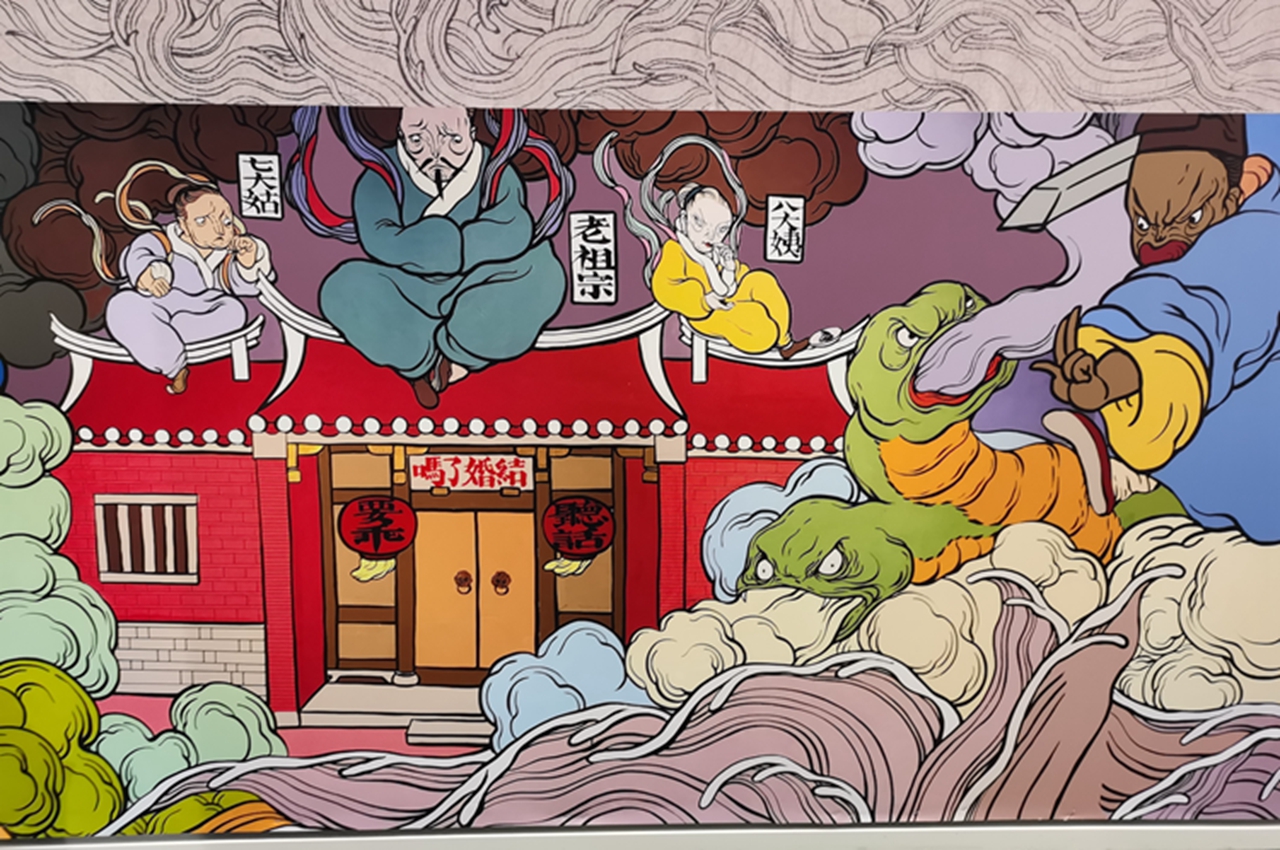
Part of Wen Na's “Harbored Sea House” is on display at the "Hometown Spring" exhibition.
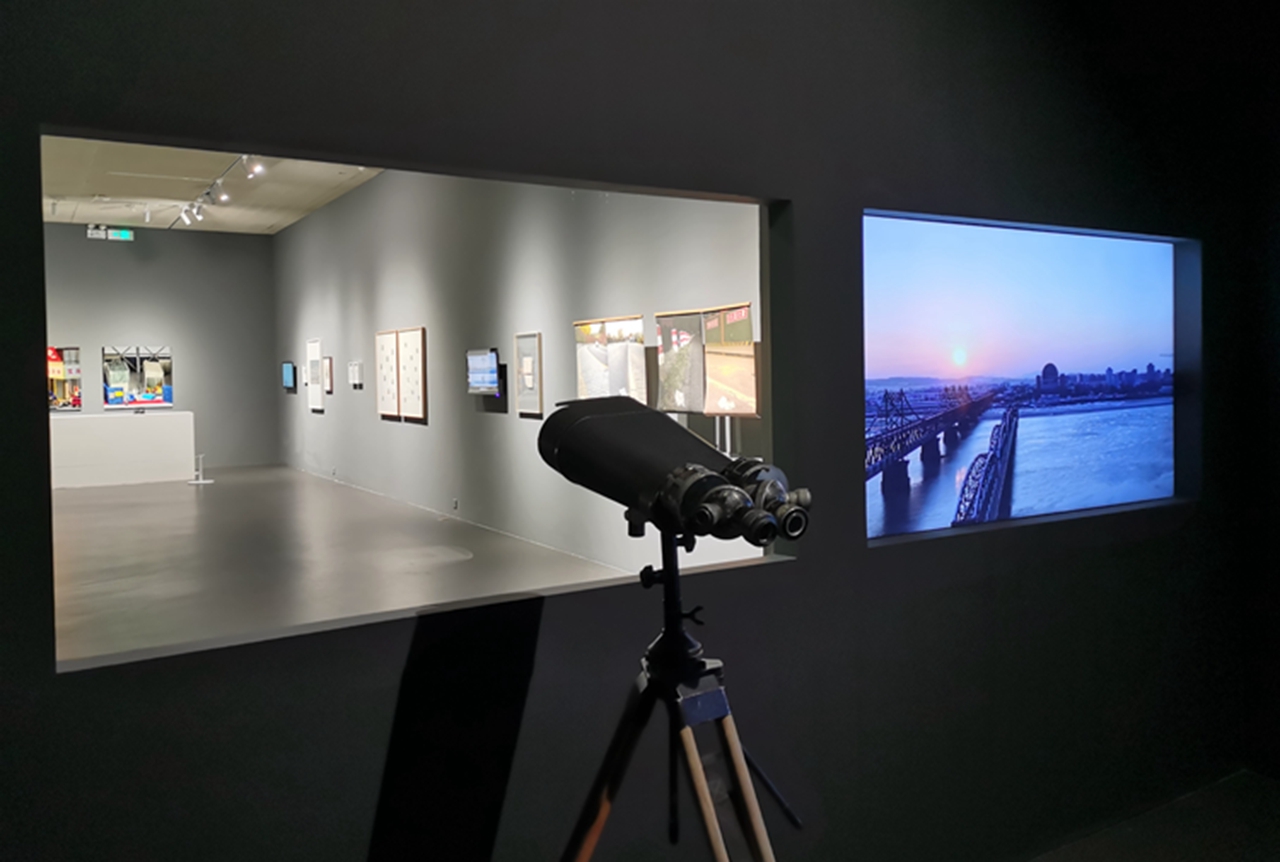
A glance at the "Hometown Spring" exhibition.
Fourteen artists, designers, musicians, writers and architects, such as Chen Hongyu, Li Binyuan and Xiao He, present new insights on their hometowns through observing old landmarks, corner parks, billboards on streets and many details.
Artist Wen Na created “Harbored Sea House,” a giant illustration-like painting, to tell the stories of people and the sea in his hometown — Quanzhou, Fujian Province. Musician Xiao He’s “Nursery Rhyme Program” collects old ballads around China including his hometown — Handan, Hebei Province. Designer Huang Yang utilizes his expertise in graphic design to tell his hometown memories in Neijiang, Sichuan Province through a series of abstract posters.
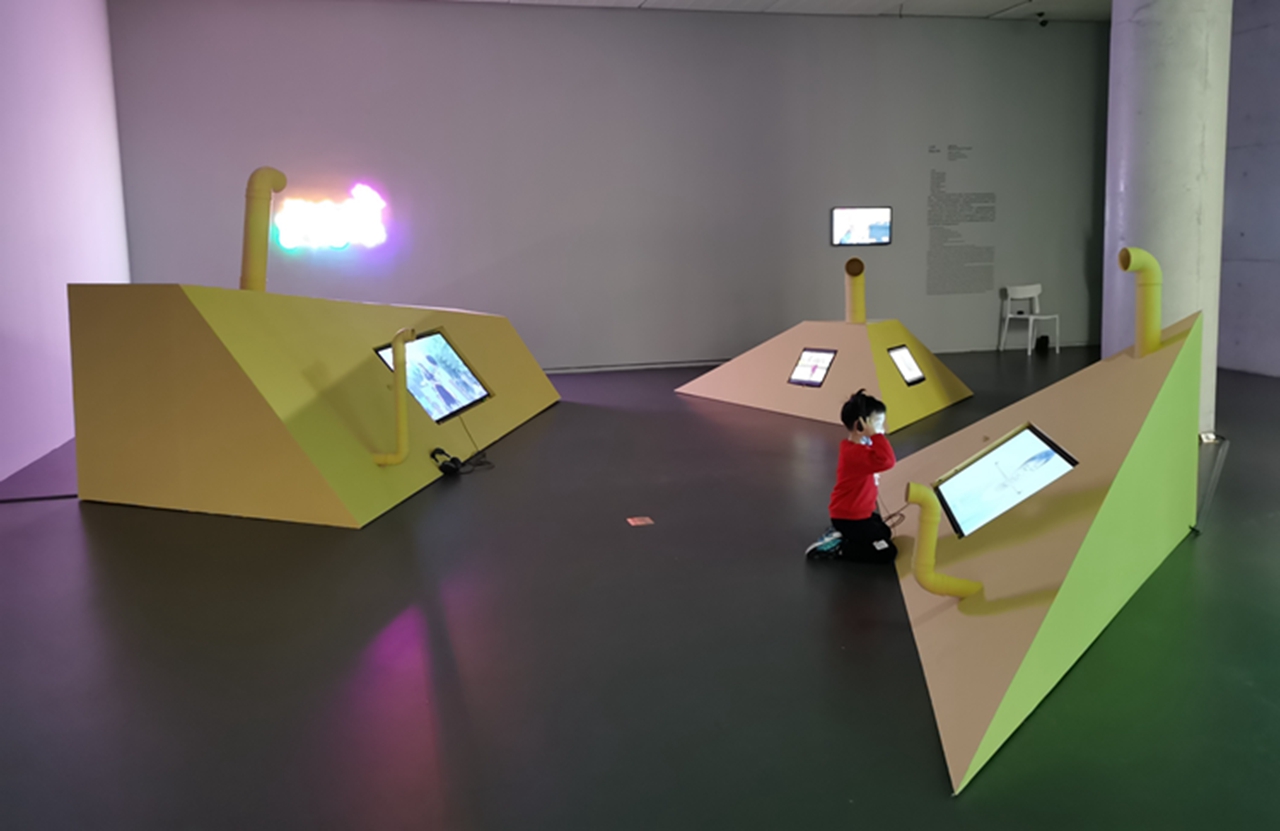
A child listens to works from Xiao He’s “Nursery Rhyme Program” at the “Hometown Spring” exhibition.
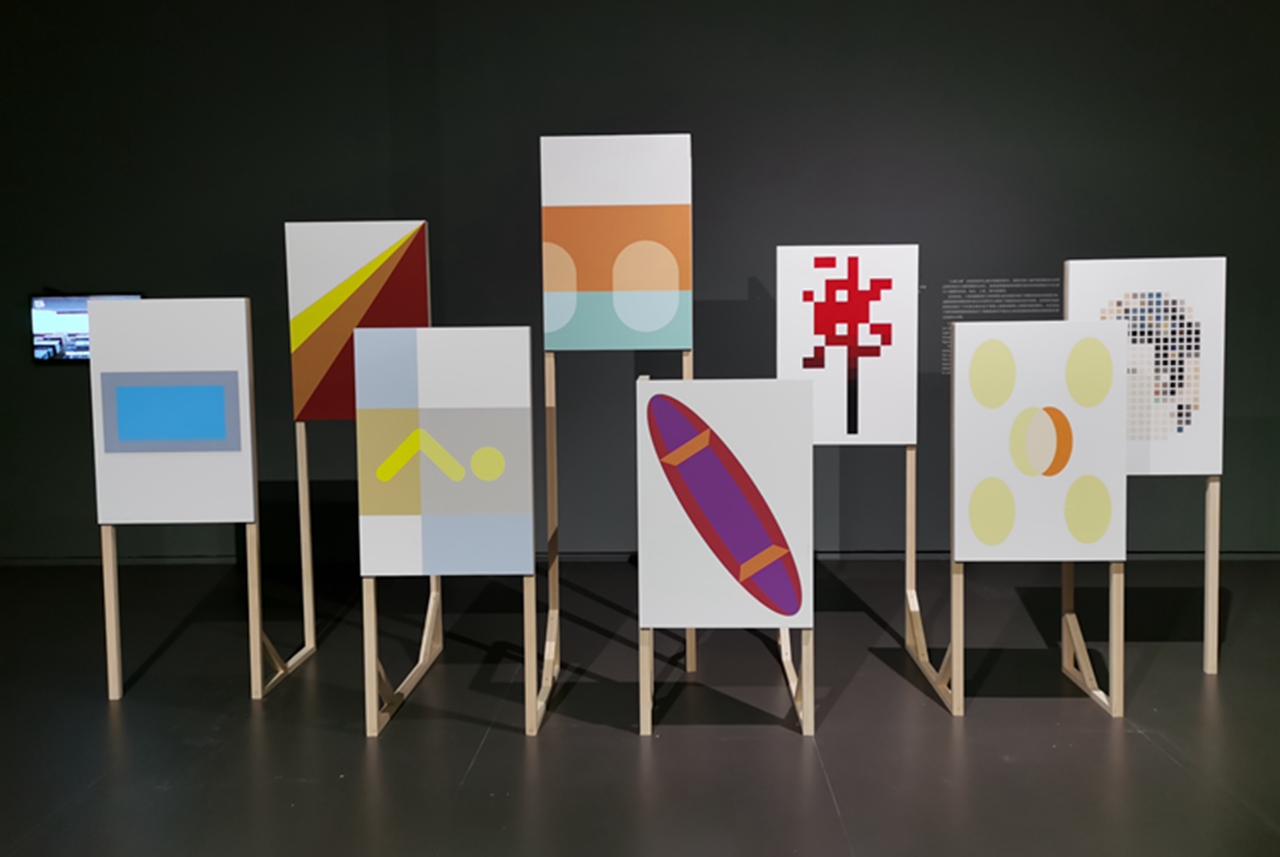
Huang Yang’s posters are shown at the “Hometown Spring” exhibition.
Doing a cartwheel repeatedly on a bridge until reaching a state of exhaustion is artist Li Binyuan’s bizarre way to commemorate the bridge and its surroundings that he grew up with in his hometown — Yongzhou, Hunan Province. In many of his performance artworks, he uses a combination of his body and surroundings to disturb, inspire, amuse and challenge urban life, and the social restrictions attached.
Architect Li Han is a Beijing native and was not raised in a small town, so he chose Pinggu District in suburban Beijing to view daily lives from an outsider’s perspective. He crafted models of Pinggu street scenes to encourage viewers to appreciate ordinary things in life.
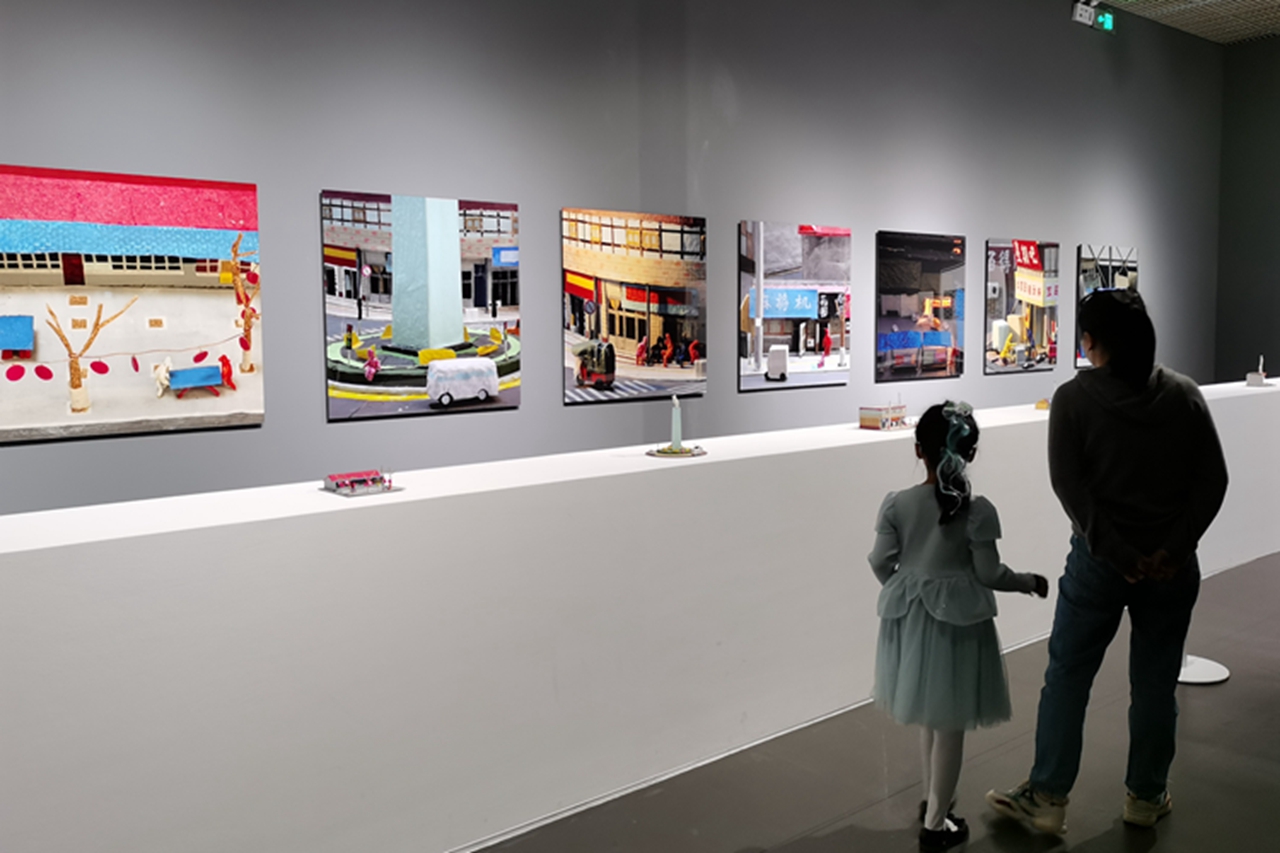
Visitors admire artworks by Li Han at the “Hometown Spring” exhibition.
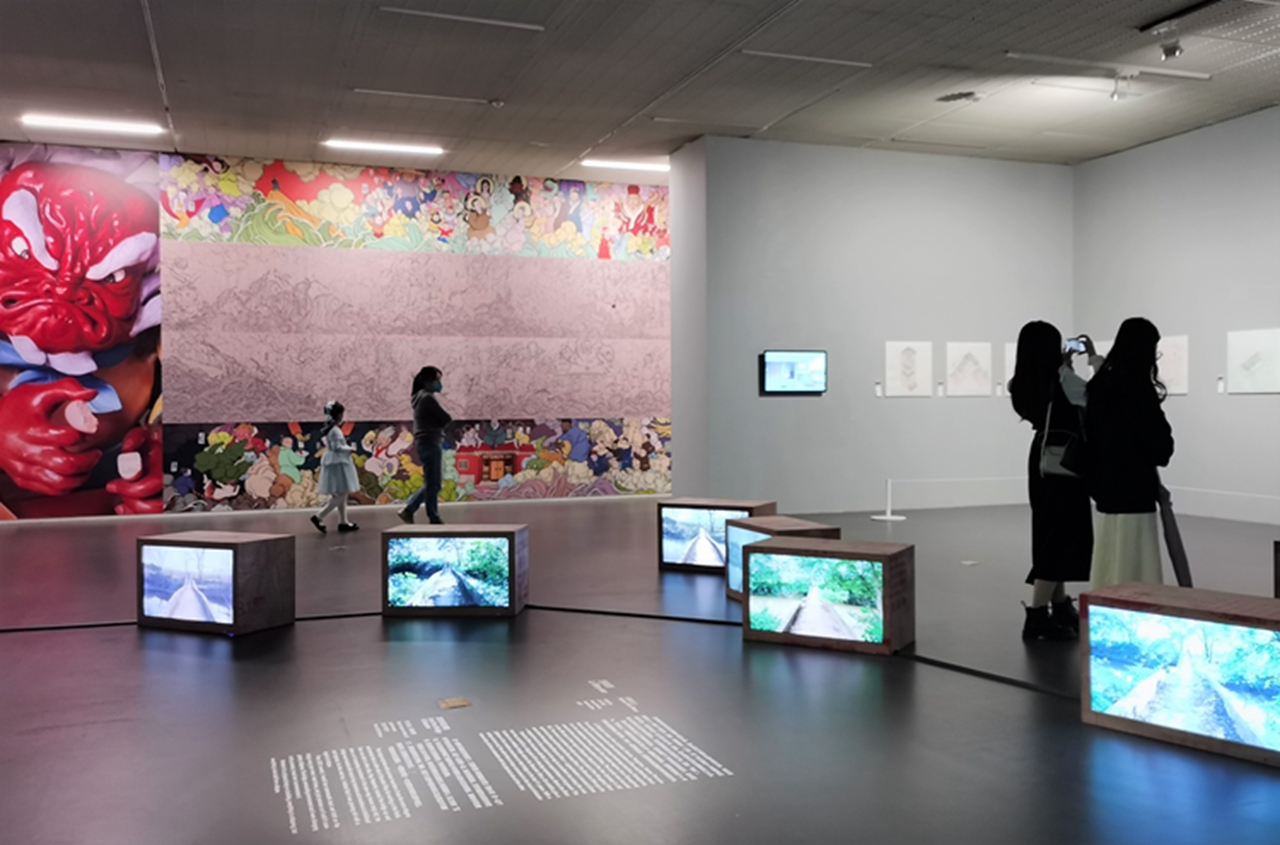
Visitors take photos at the “Hometown Spring” exhibition.
Some of “Shen Shaomin’s Brief History of Science” exhibits are still on display on the art museum’s first and second floors. All the exhibitions are free to visit and the ending dates haven’t yet been announced.
Booking: WeChat account “PingshanArtMuseum”
Venue: Pingshan Art Museum, Pingshan District (坪山美术馆)
Metro: Line 14 to Pingshan Square Station (坪山广场站), Exit D1
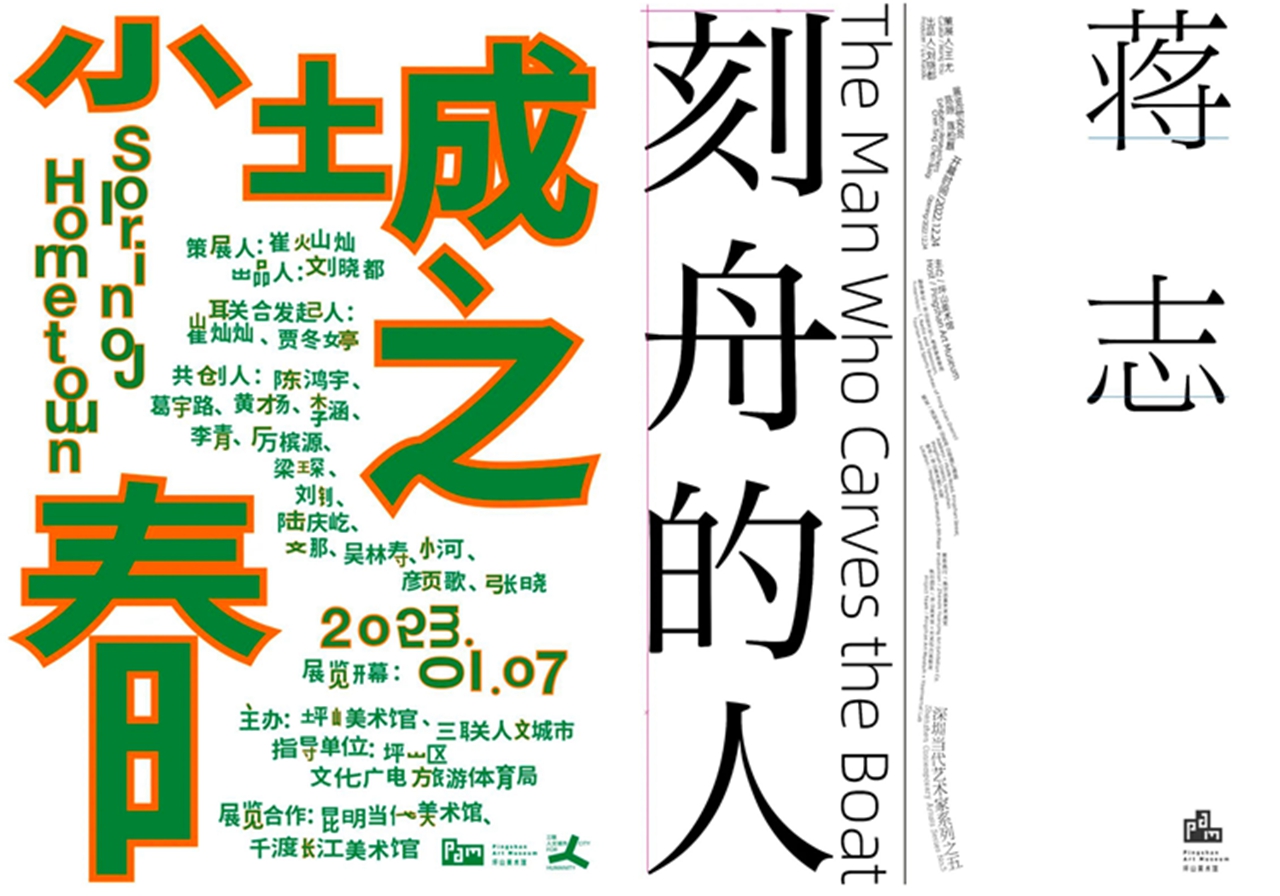
Posters of Pingshan Art Museum's two new exhibitions.